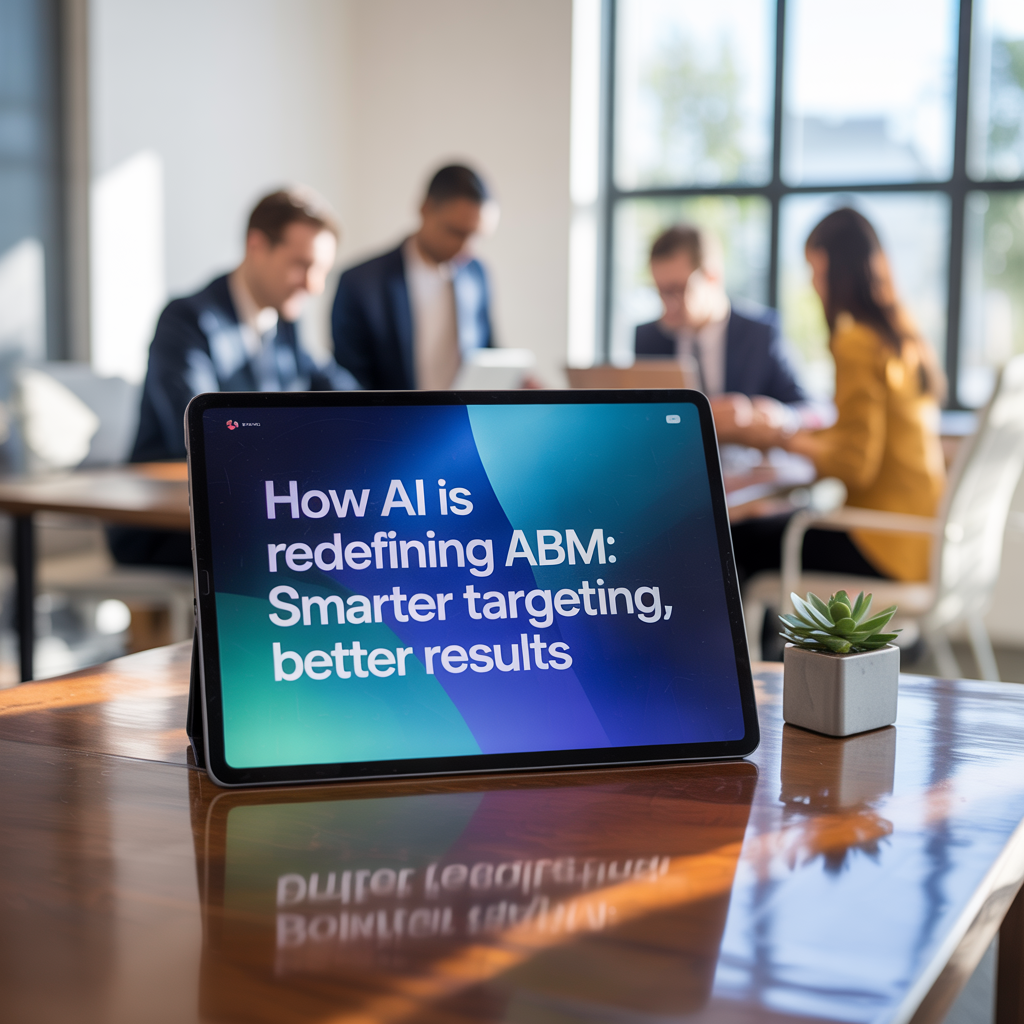Introduction
Account-Based Marketing (ABM) has always focused on precision. But in 2025, that precision is being supercharged by AI. As B2B marketers face longer sales cycles, shifting buyer behavior, and rising expectations for personalization, AI is helping them evolve ABM from manual coordination to intelligent orchestration.
In this blog, we explore how artificial intelligence is revolutionizing ABM across targeting, engagement, and measurement. Whether you're a startup or an enterprise, you’ll learn how to use AI to gain a competitive edge and deliver measurable ROI.
What is AI-Powered ABM?
AI-powered ABM combines machine learning, natural language processing (NLP), and predictive analytics to make traditional ABM workflows smarter, faster, and more scalable.
Instead of relying on sales reps to manually select accounts or marketing teams to build static personas, AI enables:
- Dynamic account selection based on real-time intent and fit
- Hyper-personalized messaging at scale
- Automated orchestration of multi-channel campaigns
"AI is no longer a ‘nice to have’—it’s table stakes for competitive ABM in 2025." — CMO, SaaS Martech Leader
Challenges in Traditional ABM
Before AI, ABM programs often struggled with:
- Manual data analysis: Identifying target accounts and decision-makers took weeks
- Limited personalization: One-size-fits-all content led to low engagement
- Disjointed tools: Lack of integration between CRM, marketing automation, and analytics
The result? High effort, low scalability, and inconsistent ROI.
How AI is Solving ABM Pain Points
- Smarter Targeting with Predictive Analytics
- AI analyzes thousands of data points (firmographics, technographics, intent signals) to identify in-market accounts
- Tools like 6sense, Demandbase, and ZoomInfo use predictive scoring to surface high-fit, high-intent accounts
- Scalable Personalization with NLP
- AI-generated content adapts to industry, persona, and buying stage
- Chatbots and virtual assistants offer real-time engagement based on buyer behavior
- Automated Campaign Orchestration
- AI sequences multi-channel outreach (email, LinkedIn, ads) based on behavioral triggers
- Platforms like HubSpot, Drift, and Terminus now integrate AI for end-to-end journey management
- Deeper Insights & Optimization
- AI dashboards surface which messages, channels, and stages are driving engagement
- Real-time recommendations help optimize spend and effort
ABM Use Cases Powered by AI
- Intent-Based Ads: Serve dynamic display ads to high-intent accounts
- Sales Enablement: AI recommends talking points and battle cards based on buyer activity
- ABM Chatbots: Engage visitors from target accounts with tailored conversations
- Email Personalization: Subject lines and CTAs optimized in real time
Future Trends: Where AI + ABM is Headed
- AI Agents for 1:1 Nurturing: AI bots that act as SDRs to guide buyers through the funnel
- Autonomous Campaigns: Minimal human input needed for campaign setup and optimization
- Voice & Video AI: Deep personalization via synthetic video, audio, and interactive content
- Predictive GTM Alignment: AI aligning sales, marketing, and product on shared intent signals
Pro Tips & Bonus Insights
- Start small: Use AI for one ABM workflow before scaling
- Align with sales: Ensure AI insights are actionable for reps
- Measure everything: Focus on revenue influence, not vanity metrics
Conclusion
AI is reshaping how ABM is executed, measured, and scaled. By removing guesswork and injecting intelligence into every stage of the funnel, AI helps B2B marketers deliver real personalization and drive real results.
If you want to thrive in 2025’s hyper-competitive market, now’s the time to infuse your ABM strategy with AI.
📩 Need help with ABM or AI integration? Contact our team to explore content, strategy, and media opportunities.
